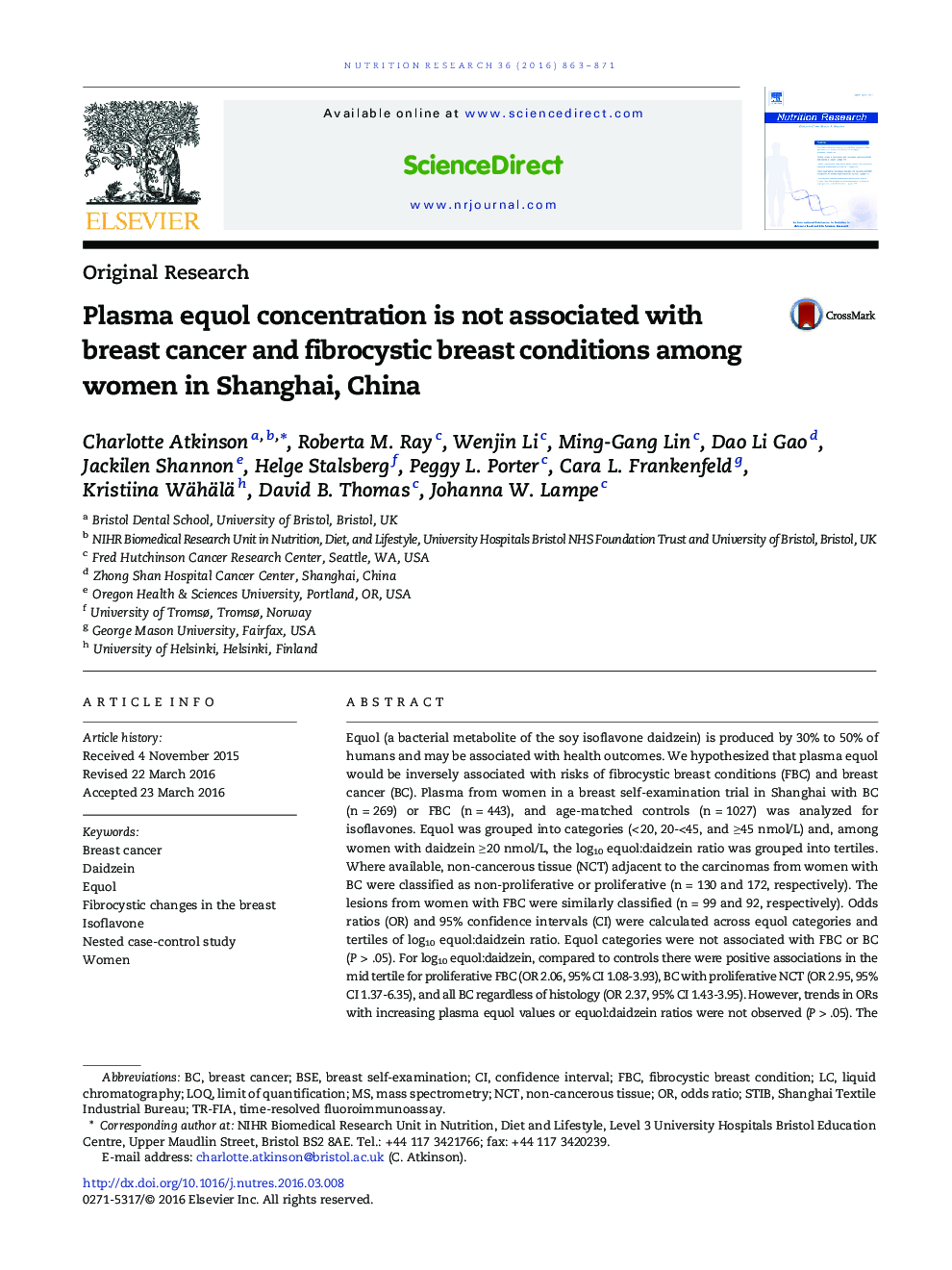| کد مقاله | کد نشریه | سال انتشار | مقاله انگلیسی | نسخه تمام متن |
|---|---|---|---|---|
| 2808822 | 1157971 | 2016 | 9 صفحه PDF | دانلود رایگان |

Equol (a bacterial metabolite of the soy isoflavone daidzein) is produced by 30% to 50% of humans and may be associated with health outcomes. We hypothesized that plasma equol would be inversely associated with risks of fibrocystic breast conditions (FBC) and breast cancer (BC). Plasma from women in a breast self-examination trial in Shanghai with BC (n = 269) or FBC (n = 443), and age-matched controls (n = 1027) was analyzed for isoflavones. Equol was grouped into categories (< 20, 20-<45, and ≥ 45 nmol/L) and, among women with daidzein ≥ 20 nmol/L, the log10 equol:daidzein ratio was grouped into tertiles. Where available, non-cancerous tissue (NCT) adjacent to the carcinomas from women with BC were classified as non-proliferative or proliferative (n = 130 and 172, respectively). The lesions from women with FBC were similarly classified (n = 99 and 92, respectively). Odds ratios (OR) and 95% confidence intervals (CI) were calculated across equol categories and tertiles of log10 equol:daidzein ratio. Equol categories were not associated with FBC or BC (P > .05). For log10 equol:daidzein, compared to controls there were positive associations in the mid tertile for proliferative FBC (OR 2.06, 95% CI 1.08-3.93), BC with proliferative NCT (OR 2.95, 95% CI 1.37-6.35), and all BC regardless of histology (OR 2.37, 95% CI 1.43-3.95). However, trends in ORs with increasing plasma equol values or equol:daidzein ratios were not observed (P > .05). The results of this study do not provide evidence that equol plays a role in the etiology of these breast conditions. However, further work is needed to confirm or refute this conclusion.
Journal: Nutrition Research - Volume 36, Issue 8, August 2016, Pages 863–871